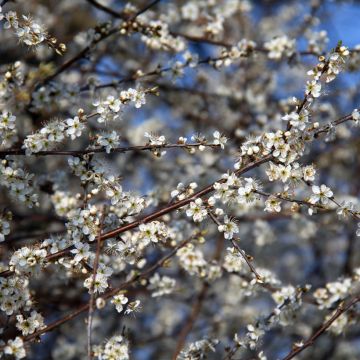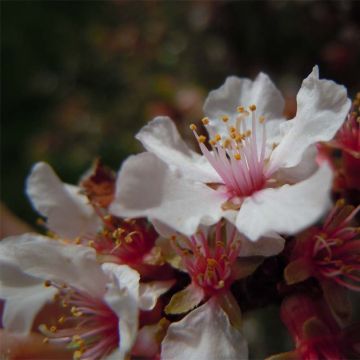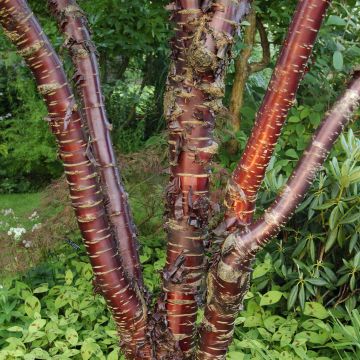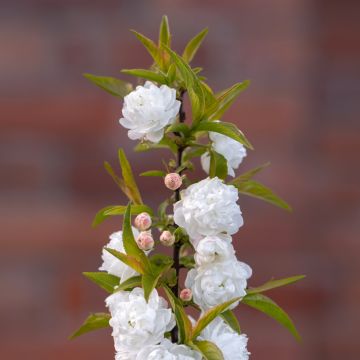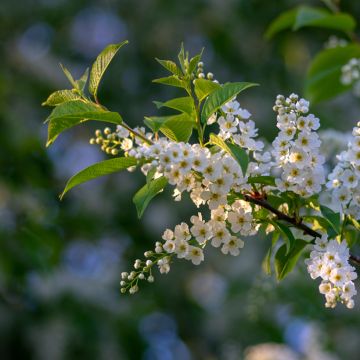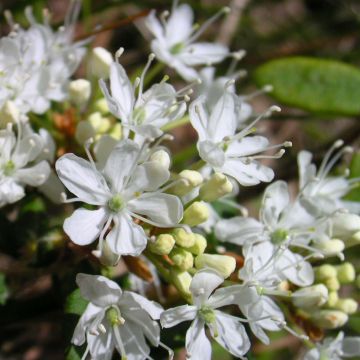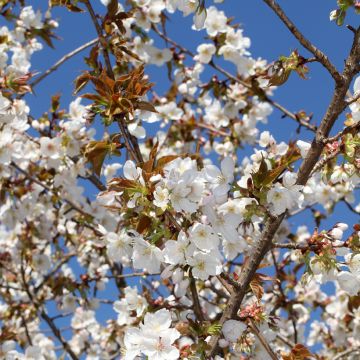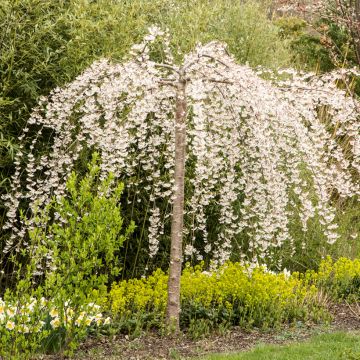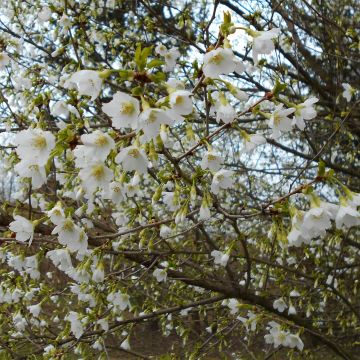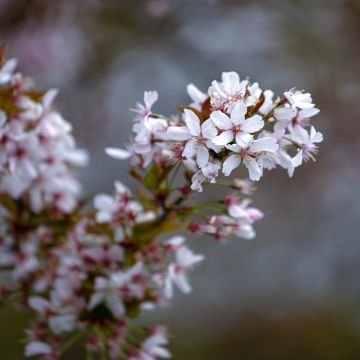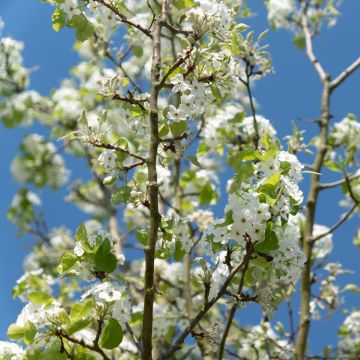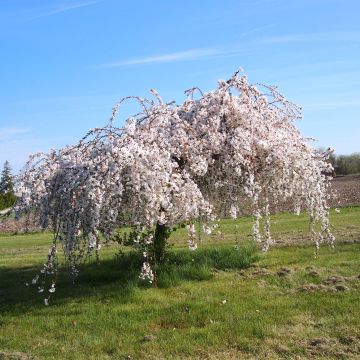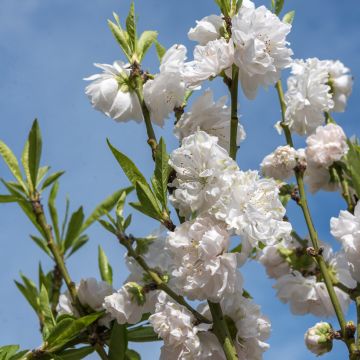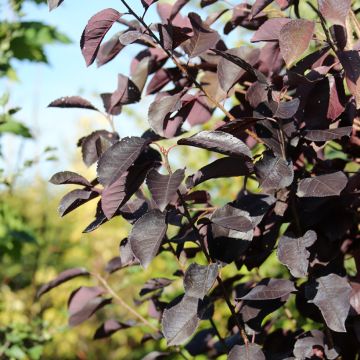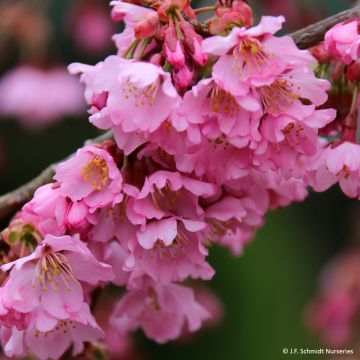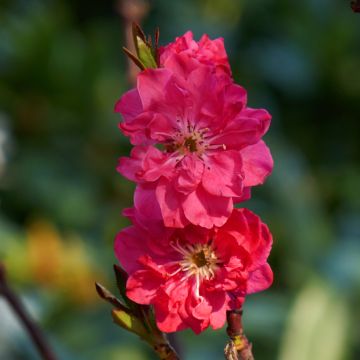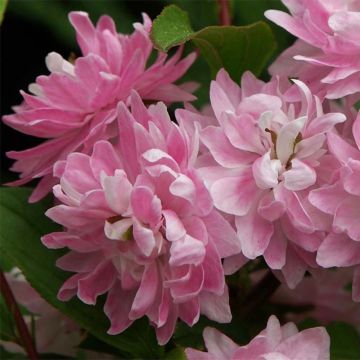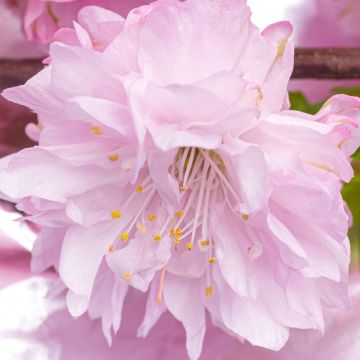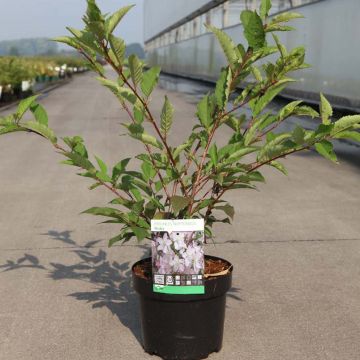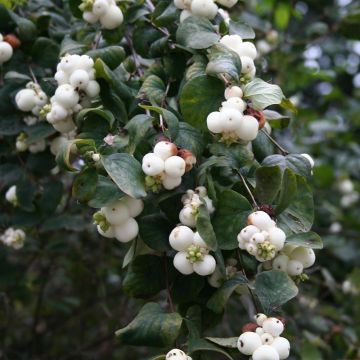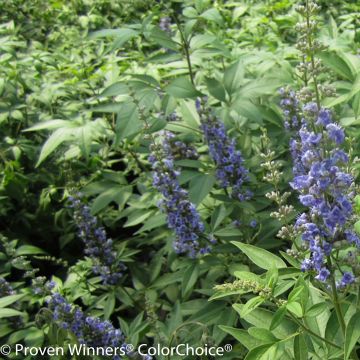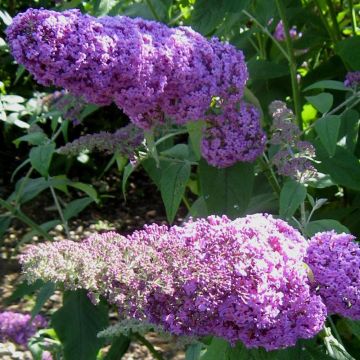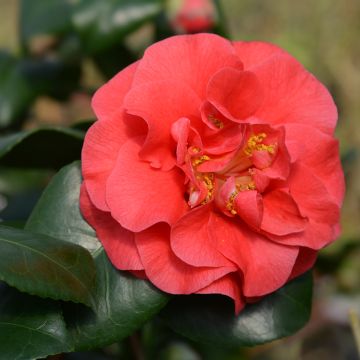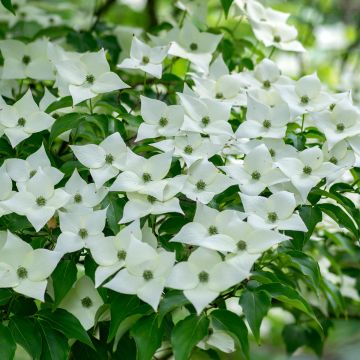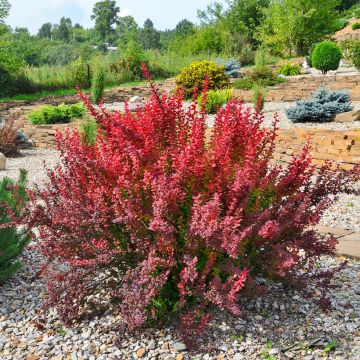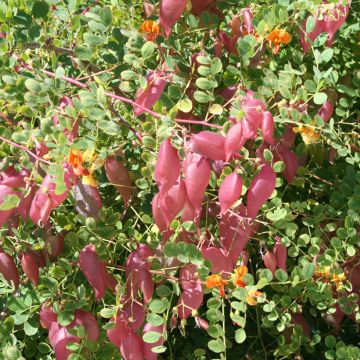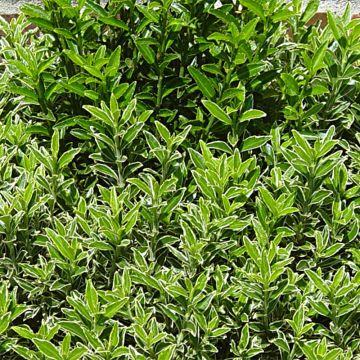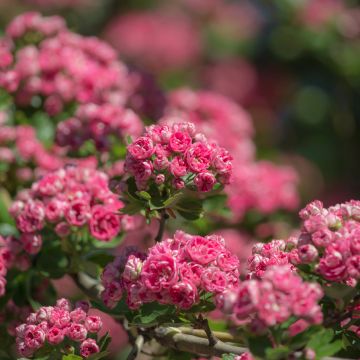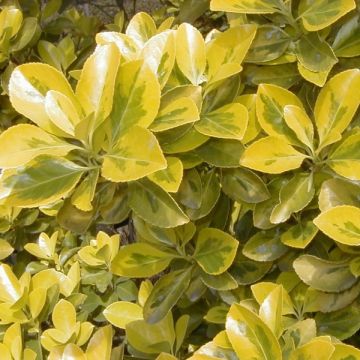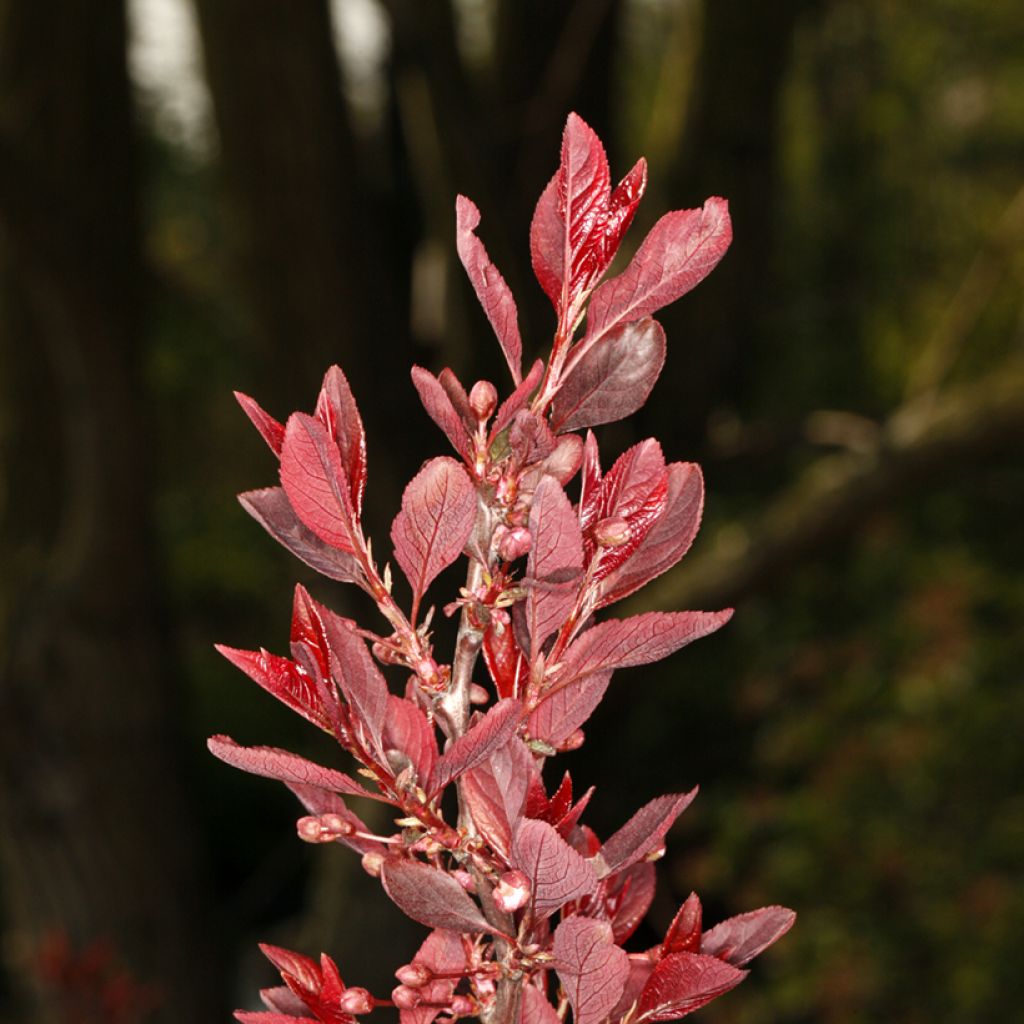

Prunus cerasifera Trailblazer - Cherry Plum
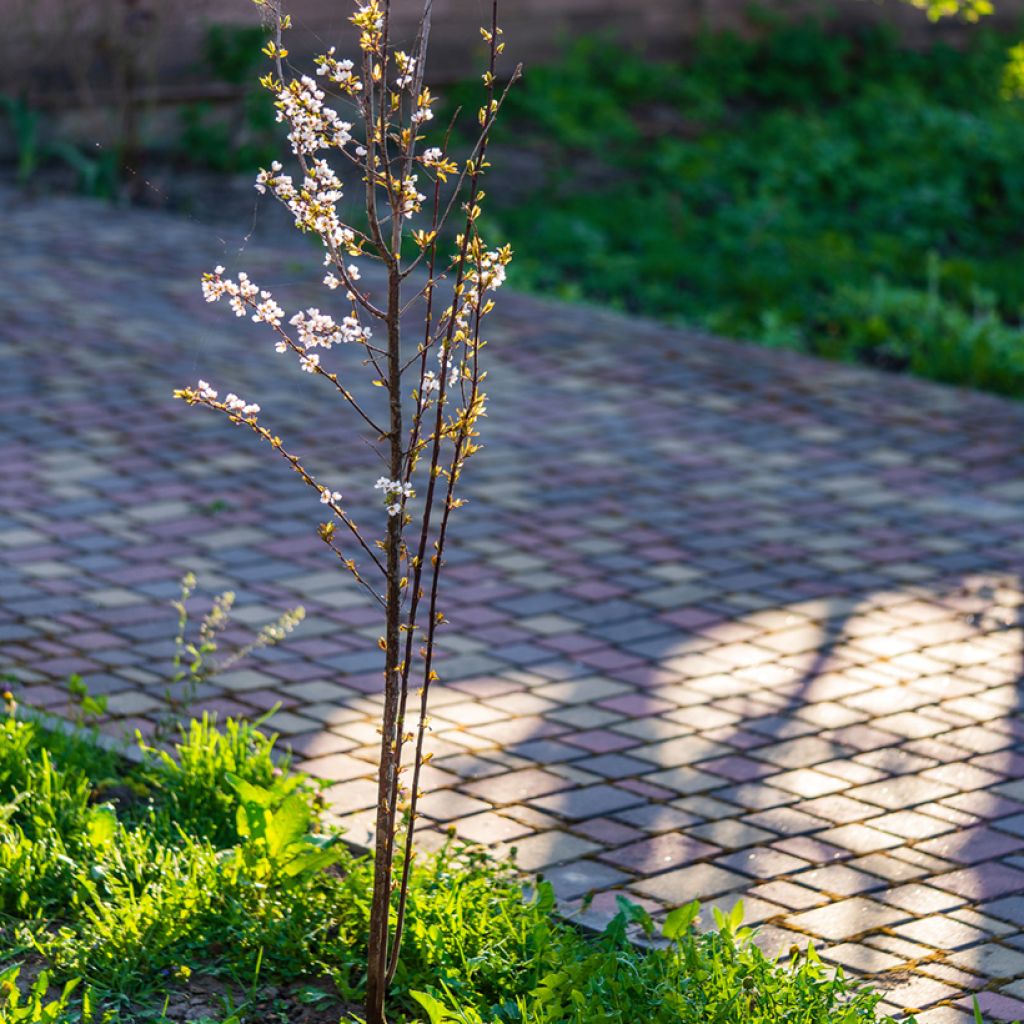

Prunus cerasifera Trailblazer - Cherry Plum
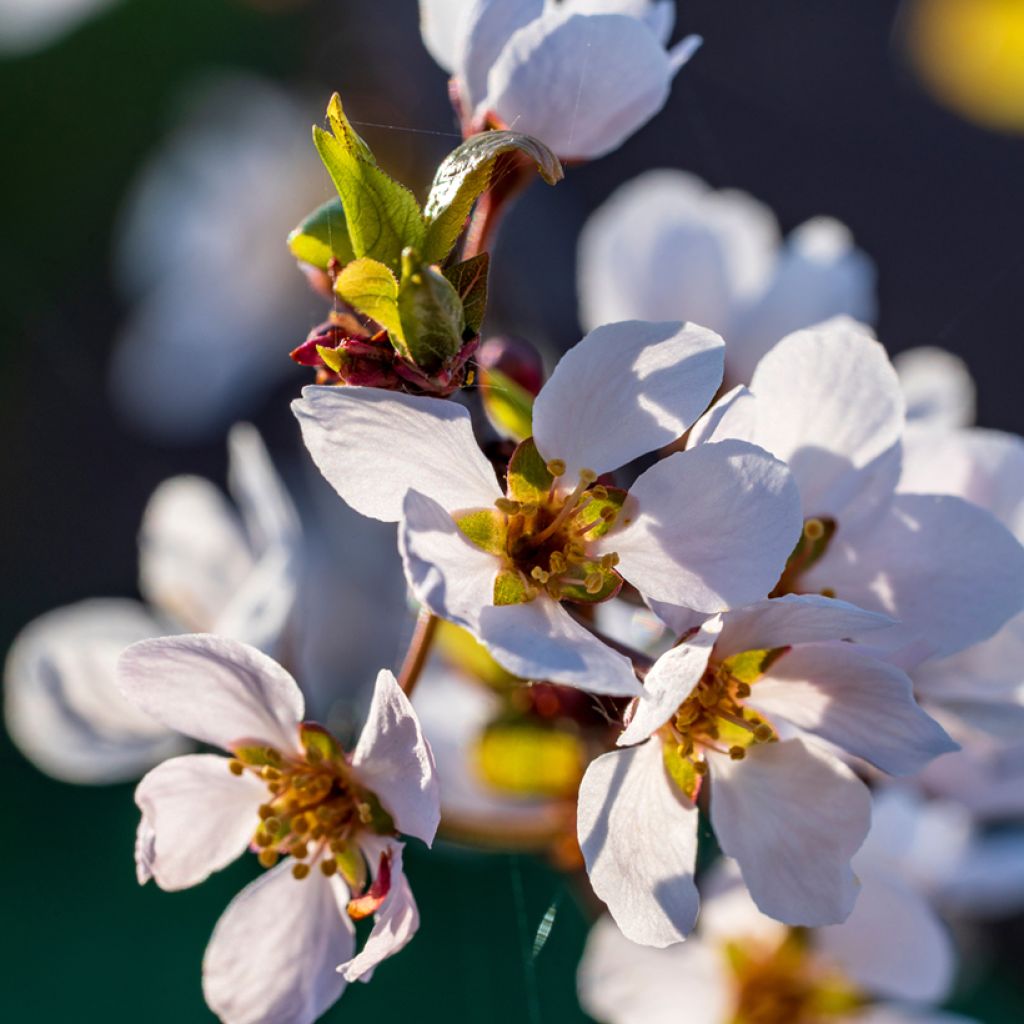

Prunus cerasifera Trailblazer - Cherry Plum
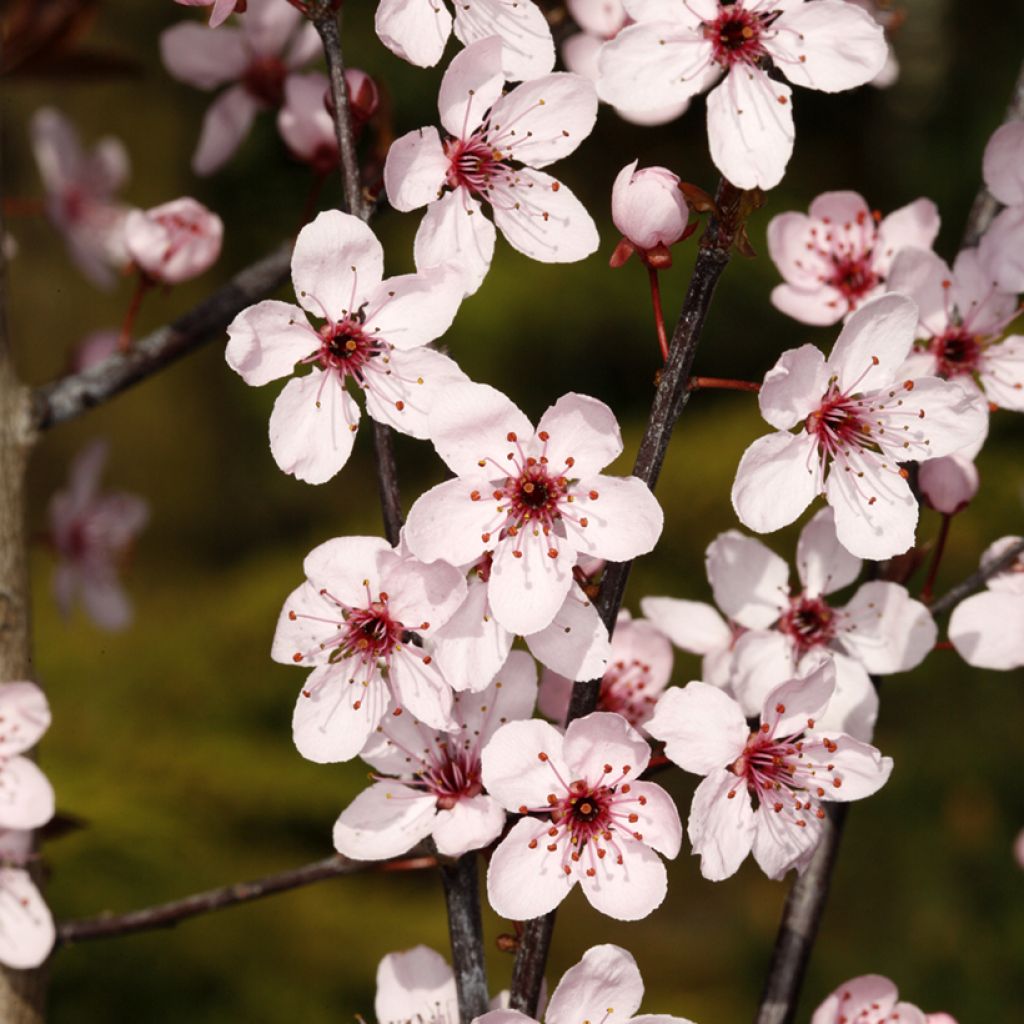

Prunus cerasifera Trailblazer - Cherry Plum
Prunus cerasifera Trailblazer - Cherry Plum
Prunus cerasifera 'Trailblazer' Hollywood
Cherry Plum, Myrobalan Plum
Why not try an alternative variety in stock?
View all →This plant carries a 24 months recovery warranty
More information
We guarantee the quality of our plants for a full growing cycle, and will replace at our expense any plant that fails to recover under normal climatic and planting conditions.
Oversize package: home delivery by special carrier from €6.90 per order..
Express home delivery from €8.90.
Does this plant fit my garden?
Set up your Plantfit profile →
Description
Prunus cerasifera 'Trailblazer' is a hybrid variety of myrobalan plum also known as Cherry plum due to its fruiting. This exceptional ornamental tree stands out for its dark purple-brown summer foliage, its early white flowering, and its large, elongated, dark red, edible and tasty fruits, resembling giant cherries, which ripen in summer. It can be planted as a specimen tree, in an informal hedge, or at the back of a border.
Prunus cerasifera, sometimes called flowering plum, is native to Asia Minor and the Caucasus, but it has naturalised in gardens and parks throughout Europe. It belongs to the large Rosaceae family, just like plums and mirabelles. It is a vigorous and robust tree that is often used as a rootstock for many varieties of plum or cherry trees. This wild species is the origin of numerous ornamental cultivars.
The 'Trailblazer' variety is a probable hybrid between Prunus 'Pissardii' and a Japanese plum 'Duarte', and it was introduced to the horticultural market by L.L. Brooks of Modesto, California in 1936. It is a deciduous tree with moderate development, reaching an average height of 6m and a width of 2.50m. It develops one or several covered trunks and a rounded, open, and spreading crown. Flowering occurs in March-April, earlier or later depending on the region. The floral buds are light pink. They open into single flowers, hanging from short peduncles, with 5 white petals arranged around numerous golden stamens. They bloom into 2cm diameter corollas. The slightly fragrant and nectar-rich flowers are followed by unusual, edible fruits. They are elongated, resembling giant cherries, pointed at the bottom, and measure 4 to 5cm. They ripen from July, or even early September depending on the climate. At that time, they are a beautiful dark red. Their flesh, also red, is a sweet and juicy delight! They resemble the fruits of the Japanese plum 'Satsuma'.
The deciduous foliage of the 'Trailblazer' plum tree is composed of alternate, widely oval, elliptical, 2 to 7cm long leaves, with toothed margins. When they burst, they are dark green. Then, they gradually turn bronze and then reddish-brown and retain their colour until the end of the season. These leaves have small hairs under the veins.
Prunus 'Trailblazer' or 'Hollywood' combines qualities. It can be grown in many regions but dislikes compact and clayey soils or arid conditions. It is irresistable with its attractive silhouette, colourful foliage, early flowering, and large appetising fruits. It can be planted as a standalone specimen, in a hedgerow, in an orchard, or in a large shrub border. To accompany it, opt for small trees that thrive in limestone soil. Amelanchier lamarckii (Lamarck's Serviceberry) produces beautiful white flowers in spring and edible berries in summer, with spectacular autumn foliage. Crataegus laevigata 'Crimson Cloud' (Hawthorn) offers magnificent red flowering in spring and red berries in autumn. Sorbus aria (Whitebeam) also has white flowers in spring followed by red berries, with interesting silver-green foliage. Finally, Cercis siliquastrum (Judas Tree) is ideal for limestone soils, adorned with spectacular pink flowers directly on the trunk and branches in spring, followed by green foliage in summer.
The fruits can be eaten as they are or used to make delicious jellies and jams.
Report an error about the product description
Prunus cerasifera Trailblazer - Cherry Plum in pictures


Plant habit
Flowering
Foliage
Botanical data
Prunus
cerasifera
'Trailblazer' Hollywood
Rosaceae
Cherry Plum, Myrobalan Plum
Prunus cerasifera Trailblazer
Cultivar or hybrid
Other Prunus
Planting and care
Prunus cerasifera Trailblazer or 'Hollywood' thrives in full sun or partial shade in any fairly deep, moist, but well-drained soil, preferably slightly alkaline, neither excessively wet nor excessively dry. It does not grow well in very acidic soils. Water only during abnormally dry and hot weather. When planting, mix your soil with compost at a ratio of 50/50. Dig a large planting hole. Apply a flowering shrub fertiliser every spring. It is best to plant the prunus in a sheltered location from dry and cold winds to enjoy its early flowering.
Planting period
Intended location
Care
This item has not been reviewed yet - be the first to leave a review about it.
Hedge shrubs
Haven't found what you were looking for?
Hardiness is the lowest winter temperature a plant can endure without suffering serious damage or even dying. However, hardiness is affected by location (a sheltered area, such as a patio), protection (winter cover) and soil type (hardiness is improved by well-drained soil).

Photo Sharing Terms & Conditions
In order to encourage gardeners to interact and share their experiences, Promesse de fleurs offers various media enabling content to be uploaded onto its Site - in particular via the ‘Photo sharing’ module.
The User agrees to refrain from:
- Posting any content that is illegal, prejudicial, insulting, racist, inciteful to hatred, revisionist, contrary to public decency, that infringes on privacy or on the privacy rights of third parties, in particular the publicity rights of persons and goods, intellectual property rights, or the right to privacy.
- Submitting content on behalf of a third party;
- Impersonate the identity of a third party and/or publish any personal information about a third party;
In general, the User undertakes to refrain from any unethical behaviour.
All Content (in particular text, comments, files, images, photos, videos, creative works, etc.), which may be subject to property or intellectual property rights, image or other private rights, shall remain the property of the User, subject to the limited rights granted by the terms of the licence granted by Promesse de fleurs as stated below. Users are at liberty to publish or not to publish such Content on the Site, notably via the ‘Photo Sharing’ facility, and accept that this Content shall be made public and freely accessible, notably on the Internet.
Users further acknowledge, undertake to have ,and guarantee that they hold all necessary rights and permissions to publish such material on the Site, in particular with regard to the legislation in force pertaining to any privacy, property, intellectual property, image, or contractual rights, or rights of any other nature. By publishing such Content on the Site, Users acknowledge accepting full liability as publishers of the Content within the meaning of the law, and grant Promesse de fleurs, free of charge, an inclusive, worldwide licence for the said Content for the entire duration of its publication, including all reproduction, representation, up/downloading, displaying, performing, transmission, and storage rights.
Users also grant permission for their name to be linked to the Content and accept that this link may not always be made available.
By engaging in posting material, Users consent to their Content becoming automatically accessible on the Internet, in particular on other sites and/or blogs and/or web pages of the Promesse de fleurs site, including in particular social pages and the Promesse de fleurs catalogue.
Users may secure the removal of entrusted content free of charge by issuing a simple request via our contact form.
The flowering period indicated on our website applies to countries and regions located in USDA zone 8 (France, the United Kingdom, Ireland, the Netherlands, etc.)
It will vary according to where you live:
- In zones 9 to 10 (Italy, Spain, Greece, etc.), flowering will occur about 2 to 4 weeks earlier.
- In zones 6 to 7 (Germany, Poland, Slovenia, and lower mountainous regions), flowering will be delayed by 2 to 3 weeks.
- In zone 5 (Central Europe, Scandinavia), blooming will be delayed by 3 to 5 weeks.
In temperate climates, pruning of spring-flowering shrubs (forsythia, spireas, etc.) should be done just after flowering.
Pruning of summer-flowering shrubs (Indian Lilac, Perovskia, etc.) can be done in winter or spring.
In cold regions as well as with frost-sensitive plants, avoid pruning too early when severe frosts may still occur.
The planting period indicated on our website applies to countries and regions located in USDA zone 8 (France, United Kingdom, Ireland, Netherlands).
It will vary according to where you live:
- In Mediterranean zones (Marseille, Madrid, Milan, etc.), autumn and winter are the best planting periods.
- In continental zones (Strasbourg, Munich, Vienna, etc.), delay planting by 2 to 3 weeks in spring and bring it forward by 2 to 4 weeks in autumn.
- In mountainous regions (the Alps, Pyrenees, Carpathians, etc.), it is best to plant in late spring (May-June) or late summer (August-September).
The harvesting period indicated on our website applies to countries and regions in USDA zone 8 (France, England, Ireland, the Netherlands).
In colder areas (Scandinavia, Poland, Austria...) fruit and vegetable harvests are likely to be delayed by 3-4 weeks.
In warmer areas (Italy, Spain, Greece, etc.), harvesting will probably take place earlier, depending on weather conditions.
The sowing periods indicated on our website apply to countries and regions within USDA Zone 8 (France, UK, Ireland, Netherlands).
In colder areas (Scandinavia, Poland, Austria...), delay any outdoor sowing by 3-4 weeks, or sow under glass.
In warmer climes (Italy, Spain, Greece, etc.), bring outdoor sowing forward by a few weeks.

































